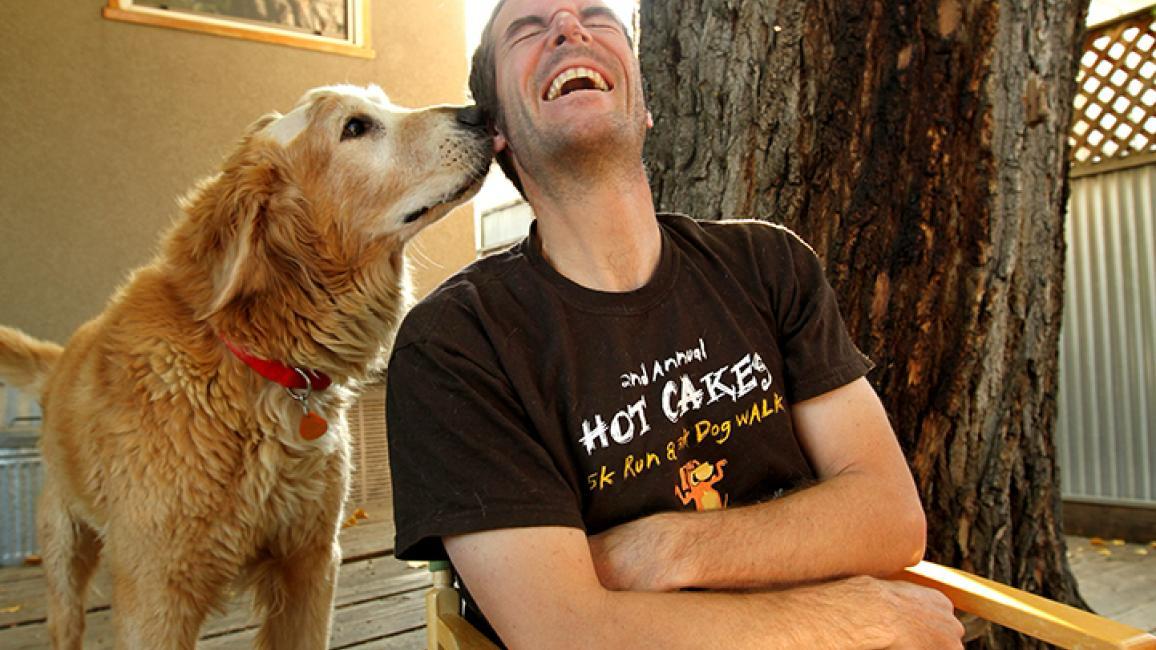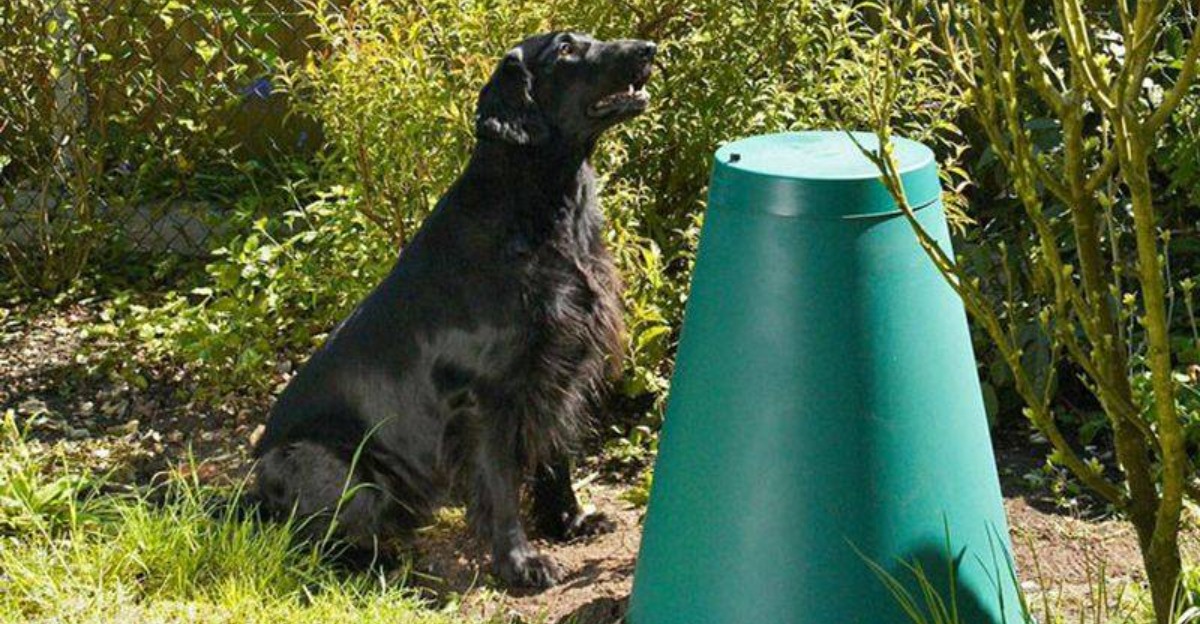
How Fostering Saves Lives (and Changes Yours Too).
Fostering animals is a transformative act that saves lives, giving abandoned, sick, or traumatized pets a safe and loving temporary home while preparing them for adoption. Beyond rescuing animals, fostering profoundly impacts humans too, teaching empathy, patience, and unconditional love, offering emotional healing, purpose, and connection, and proving that even temporary care can create lasting change for both pets and people.
🐶 Pet Star
53 min read · 21, Oct 2025

The Power of Fostering: A Lifeline for Homeless Animals (≈1000 words)
Every year, millions of cats, dogs, and other companion animals end up in shelters worldwide—many victims of abandonment, neglect, or circumstances beyond their owners’ control. While shelters strive to care for them, space and resources are limited. This is where fostering steps in as a literal lifesaver. Fostering provides temporary homes to animals until they are adopted permanently. It bridges the critical gap between abandonment and adoption, ensuring more animals get the second chance they deserve.
For a frightened or sick animal, a foster home is a sanctuary. It’s where they heal—physically and emotionally. Shelter environments, though well-intentioned, can be stressful. The constant barking, limited human interaction, and unfamiliar smells can make animals anxious or withdrawn. Foster homes, on the other hand, provide quiet, comfort, and the stability of one-on-one care. A foster caregiver becomes a teacher, nurse, and friend all at once. They help socialize shy pets, nurse injured or ill ones, and show them that love still exists.
Many people assume fostering is only about helping animals, but the impact goes far deeper. Each time someone chooses to foster, they’re helping the shelter system manage overwhelming intake numbers. Shelters often run at full capacity, and without foster volunteers, many animals—especially the very young, elderly, or those needing medical recovery—might face euthanasia simply because there’s no room. By fostering, an individual directly saves lives. For every animal placed in a foster home, a shelter gains space for another in need. It’s a ripple effect of compassion—one home, one animal, one life at a time.
Different types of fostering exist. Some people foster newborn kittens or puppies who need bottle feeding until they’re strong enough for adoption. Others take in adult dogs that need behavioral training or medical care. Some foster senior pets to give them a comfortable place to spend their golden years. No matter the situation, every foster arrangement fulfills a unique need. And because fostering is temporary, it’s accessible for those who want to make a difference but cannot commit to lifelong pet ownership.
Fostering also plays a vital role in helping animals become adoption-ready. Many shelter animals have never lived in a home before—they might not know how to behave around furniture, people, or other pets. Foster caregivers help them adjust to domestic life, making the eventual transition to a permanent home much smoother. They also provide valuable insight to shelters about the pet’s personality, habits, and preferences—information that helps match them with the perfect adopter.
Financially, most shelters cover essential veterinary care, food, and supplies for fosters. This makes fostering an affordable and rewarding way to volunteer. The biggest investment required is time, patience, and empathy. Those who foster often say that the emotional rewards far outweigh any challenges. Watching a scared, neglected animal blossom into a confident, loving pet ready for adoption is profoundly fulfilling.
But fostering doesn’t just transform animal lives—it changes human ones too. People who foster often describe the experience as therapeutic. Caring for a vulnerable animal can reduce loneliness, anxiety, and even symptoms of depression. It gives life a renewed sense of purpose and meaning. Many find that fostering helps them process grief after losing a pet, or fills their home with warmth when they aren’t ready to adopt again. It’s a beautiful cycle of healing—for both the animal and the human.
Another overlooked benefit of fostering is community connection. Fosters often join supportive networks of like-minded people—volunteers, shelter workers, and fellow fosters—who share advice and celebrate success stories. This sense of shared purpose and compassion creates a community bound by kindness. It shows that small individual actions can collectively create monumental change.
Despite its rewards, fostering can be emotionally challenging—especially when it’s time to say goodbye. The attachment formed during weeks or months of care is deep and genuine. Letting go can be painful. However, seasoned fosters remind newcomers that every goodbye is a victory. Each adoption represents a life saved and a new beginning made possible by their temporary love. And often, fosters don’t stop at one—they open their homes again and again, because they’ve seen firsthand how powerful their role is.
In some cases, fosters experience what’s affectionately called a “foster fail”—when they decide to adopt the animal themselves. While this is common and heartwarming, shelters still emphasize the importance of continuing to foster others, as the need never ends. Even fostering one animal a year can make a massive difference.
Ultimately, fostering embodies the best of humanity: compassion, empathy, and the willingness to help without expecting anything in return. It turns ordinary homes into sanctuaries, ordinary people into heroes, and frightened animals into beloved family members. Every foster story is a tale of rescue—but not just for the animal. Often, it’s the foster who feels rescued too.
The Emotional and Personal Transformation Through Fostering (≈1000 words)
While fostering undoubtedly saves animal lives, it also nurtures deep emotional growth in the humans who participate. Opening one’s home to an animal in need often leads to profound personal change. It teaches patience, empathy, and the power of unconditional love. It reminds people of what truly matters: compassion and connection.
Fostering an animal introduces a unique kind of responsibility. Unlike adoption, where the bond is lifelong, fostering requires someone to pour their love and effort into an animal knowing that the goal is to let go. This act of selflessness—loving fully while preparing to say goodbye—builds emotional resilience. It teaches the valuable lesson that love is not about possession, but about helping another being thrive, even if it means parting ways.
For children, fostering offers lessons in kindness and accountability. Families who foster often find that their children develop empathy and respect for animals at a young age. They witness firsthand the impact of care, patience, and nurturing on another life. It’s an education that goes beyond classrooms—it shapes their character and values for a lifetime.
Fostering also helps people confront their fears and insecurities. Many fosters discover inner strengths they didn’t know they had. They learn to handle medical treatments, administer medication, and manage behavioral issues. They overcome challenges through compassion and persistence. And as they see their foster animals heal and grow, they gain confidence in their ability to make a difference—not just in the lives of animals, but in their communities.
Moreover, fostering can be deeply healing for those dealing with loss or loneliness. After the death of a beloved pet or during periods of personal hardship, caring for a foster animal can reignite a sense of hope. Animals, with their innate trust and affection, help people reconnect with joy and purpose. They ask for little—just love, attention, and care—and give back immeasurable emotional comfort.
From a psychological perspective, fostering offers numerous mental health benefits. Studies show that interacting with animals reduces stress, lowers blood pressure, and increases the production of oxytocin—the “feel-good” hormone linked to bonding and happiness. Fostering combines these benefits with the fulfillment of altruism, creating a unique form of emotional therapy.
Socially, fostering connects people with communities they may never have encountered otherwise. Many shelters and rescue groups operate on volunteer-based systems, creating a supportive environment where everyone shares the same mission: to save lives. These connections often evolve into friendships built on shared compassion. Together, fosters and rescuers form a chain of kindness that extends across neighborhoods and cities, uniting people through the simple yet powerful act of care.
And while fostering is emotionally enriching, it also brings practical rewards. Some foster caregivers eventually find their “forever pet” through the process. By fostering multiple animals, they learn what kind of companion best suits their lifestyle. Others find that fostering provides the companionship and joy of pet ownership without the long-term commitment—perfect for people who travel frequently or have uncertain schedules.
Even workplaces are beginning to recognize the benefits of fostering. Many organizations now partner with animal shelters to encourage employees to foster or adopt. The result? Happier, more empathetic teams and a stronger sense of social responsibility. It’s a win-win situation for both humans and animals.
Ultimately, fostering redefines what it means to save a life. It’s not only about rescuing an animal from danger—it’s about giving them the love, care, and confidence to start anew. And in doing so, foster caregivers often find that their own hearts are renewed too. They discover that compassion doesn’t just save others—it saves us as well.
Every year, millions of animals around the world—dogs, cats, rabbits, and others—find themselves homeless, abandoned, or surrendered to overcrowded shelters. Despite the tireless work of animal welfare organizations, the sheer number of animals needing help often exceeds available space and resources. Here, fostering becomes an essential lifeline, bridging the gap between survival and a second chance at happiness. Fostering means temporarily opening your home and heart to an animal in need until a permanent, loving family adopts them. It’s not just a gesture of kindness—it’s an act that directly saves lives. Many shelters face tough decisions when they reach capacity, and fostering helps relieve that pressure, ensuring more animals can be rescued and cared for. Every animal taken into a foster home frees up vital shelter space for another in desperate need, setting off a chain reaction of compassion. Beyond simply offering a roof, foster homes provide an environment that is calmer, safer, and more nurturing than any shelter could offer. Shelter life, despite best efforts, can be overwhelming for animals—loud noises, limited interaction, and unfamiliar surroundings can cause anxiety, fear, or depression. In contrast, foster homes give animals a chance to decompress, heal, and rediscover trust in humans. A frightened cat begins to purr again, a neglected dog wags its tail for the first time in months—all thanks to the patience and love of a foster caregiver.
Fostering is not limited to one type of animal or situation. Some fosters specialize in newborn kittens or puppies that require round-the-clock bottle feeding, while others take in senior pets needing comfort in their twilight years. Some focus on animals recovering from surgery or illness, while others help rehabilitate those with behavioral challenges. Each role is unique, yet all share one mission: to give an animal a chance to live, love, and be loved. What makes fostering even more impactful is that shelters often cover medical care, vaccinations, and essential supplies, allowing volunteers to focus on emotional nurturing rather than financial burdens. Fostering becomes accessible to nearly anyone willing to commit their time and compassion. And while it may seem temporary, its impact lasts forever—for the animal, for the shelter, and for the person fostering. When animals are fostered, they gain invaluable experiences that make them more adoptable. Many shelter pets have never lived in homes before—they don’t know how to behave around people, furniture, or other animals. A foster home becomes their training ground, teaching them how to trust and adjust. Foster caregivers also observe each pet’s personality, helping match them with ideal forever families. This insight makes adoptions more successful and permanent, reducing the chances of animals being returned to shelters.
Fostering also plays a vital role in shelter sustainability. Overcrowded facilities can lead to increased disease transmission, stress, and limited individual attention for each animal. Foster homes offer the opposite—personal care, routine, and love. In essence, fostering decentralizes shelter care, spreading compassion across communities instead of confining it to one building. Moreover, fostering isn’t only beneficial for animals—it’s profoundly healing for humans too. People who foster often report reduced stress, greater emotional balance, and an increased sense of purpose. For someone recovering from grief, loneliness, or trauma, the unconditional love of a foster animal can be deeply therapeutic. The companionship they offer can ease depression and anxiety, while the act of caregiving helps people reconnect with life’s simple joys. In fostering, empathy becomes action, and compassion becomes transformation.
Many fosters describe their experience as both challenging and deeply rewarding. It requires patience, especially when caring for traumatized or untrained animals. Some come with scars—both visible and invisible—and helping them trust again takes time. Yet, witnessing their transformation is priceless. The timid rescue dog who once cowered now plays freely; the weak kitten grows strong enough to purr in your arms. These moments make every sleepless night or chewed shoe worth it. Fostering also builds a sense of community. Volunteers often form bonds with other fosters, shelter workers, and adopters, creating a network of empathy and shared purpose. It’s a reminder that change doesn’t happen in isolation—it grows through collective compassion.
The hardest part, many say, is letting go when adoption day arrives. After weeks or months of care, saying goodbye to a foster pet can be bittersweet. Tears often accompany the joy of seeing them go to a permanent home. But experienced fosters understand that every farewell means success—it means another life saved, another space freed for the next animal in need. And while it’s hard, the knowledge that you were a stepping stone to a happy ending brings peace. In fact, many fosters continue helping again and again, drawn by the profound fulfillment fostering brings. Some even experience what’s affectionately called a “foster fail,” where they fall in love and adopt the animal themselves—a heartwarming testament to the bond that fostering creates. In truth, fostering isn’t just about giving an animal a second chance—it’s about rediscovering humanity’s most beautiful quality: the ability to care selflessly.
The emotional transformation that comes with fostering is as profound as the lives it saves. When a person decides to foster, they embark on a journey of empathy, patience, and growth. It’s not merely about taking care of an animal—it’s about opening one’s heart to vulnerability, learning to love without ownership, and understanding the depth of connection that can form between two beings who’ve both known uncertainty. Fostering redefines compassion, because it demands love with the knowledge that you will one day say goodbye. Yet, this impermanence makes the bond even more meaningful—it’s love in its purest, most selfless form. For families, fostering provides children with invaluable lessons about kindness, responsibility, and empathy. Kids learn what it means to nurture, to give time and care, and to see the tangible results of compassion as their foster pets heal and grow. In a world often focused on materialism and instant gratification, fostering teaches that small acts of care can change the course of another life forever.
For adults, fostering can become a form of emotional healing. Those grieving the loss of a beloved pet or experiencing loneliness find solace in the presence of a foster animal. It brings companionship, structure, and daily purpose. Animals have an innate ability to sense emotion—they comfort in silence, love without judgment, and remind humans of the simple beauty in connection. Scientific studies show that interacting with animals lowers blood pressure, releases oxytocin (the “bonding hormone”), and reduces anxiety. Fostering amplifies these benefits by combining emotional care with altruism. The act of giving without expectation nurtures happiness at a deep psychological level. It’s no surprise that many foster caregivers describe the experience as “life-changing.”
Beyond emotional growth, fostering strengthens community ties. Rescue organizations, foster volunteers, and adopters form interconnected support networks that thrive on cooperation. Together, they create a safety net for animals who might otherwise be forgotten. These relationships often extend beyond animal care, fostering human connection and shared purpose. Social isolation, a growing modern challenge, is diminished when individuals engage in fostering communities. The sense of belonging—of doing something that matters—gives life greater meaning. Moreover, fostering offers flexibility that traditional pet ownership does not. For people who travel, rent, or have uncertain life situations, fostering allows them to enjoy the companionship of pets without permanent commitment. It’s the perfect balance between giving love and maintaining freedom, making it an ideal option for those who want to help but can’t yet adopt.
Workplaces and educational institutions are beginning to recognize the social and psychological benefits of fostering too. Some organizations encourage employees to foster as part of wellness programs or community outreach. The result is more empathetic, emotionally intelligent teams and a culture that values kindness. Fostering teaches teamwork, patience, and empathy—qualities that extend far beyond the home. On a societal scale, fostering reduces the number of homeless animals and lowers euthanasia rates, creating more compassionate communities. It demonstrates that one person’s action can have a cascading impact—saving not just one life, but many.
Of course, fostering is not without challenges. It requires adaptability, emotional strength, and understanding. Some animals may have health issues, trauma, or behavioral difficulties. But these challenges often bring the greatest rewards. Watching an animal slowly heal—physically and emotionally—is like witnessing a miracle. Every small progress, every wagging tail or gentle purr, becomes a testament to resilience and love. And when adoption day finally comes, though bittersweet, it’s filled with pride and fulfillment. Knowing that your care helped a once-lost soul find safety, health, and happiness is an unmatched feeling.
In the end, fostering is not just about saving animals—it’s about transforming hearts. It’s a reminder that compassion is contagious, that small acts of kindness ripple outward in ways we may never fully see. For the animals, it means life. For the humans, it means growth, gratitude, and connection. Fostering saves lives—but more than that, it changes the way we view the world. It teaches us that empathy, no matter how temporary its expression, leaves a permanent impact. And perhaps the greatest truth of all is that when you foster an animal, you don’t just rescue them—they rescue you too.
Conclusion
Fostering is more than an act of kindness—it’s a lifeline for animals and a transformative experience for humans. It saves lives by reducing shelter overcrowding, offering safe recovery spaces, and preparing animals for adoption. Beyond that, it nurtures empathy, emotional healing, and a sense of community among fosters. Each fostered animal represents a victory of compassion over indifference.
In essence, fostering teaches one simple truth: when you open your home, you open your heart—and in doing so, you might just change two lives forever.
Q&A Section
Q1: What exactly does fostering an animal mean?
Ans: Fostering means providing a temporary home for an animal until it’s adopted permanently. It involves caring for the pet’s daily needs, offering love, and sometimes helping with training or recovery.
Q2: Do I need to pay for food and vet bills when fostering?
Ans: Most shelters or rescue groups cover veterinary care, food, and supplies. The foster’s main contribution is time, attention, and love.
Q3: Is it hard to say goodbye when a foster animal is adopted?
Ans: Yes, it can be emotional, but many fosters find comfort knowing their love helped the animal find a forever home. Each goodbye makes space to save another life.
Q4: Can people with full-time jobs foster animals?
Ans: Absolutely. Many animals are fine being alone for part of the day. Shelters can match fosters with pets that fit their schedules and lifestyles.
Q5: What are the benefits of fostering for humans?
Ans: Fostering reduces stress, promotes emotional well-being, builds empathy, and provides a sense of purpose. It’s an incredibly rewarding experience for individuals and families alike.
Similar Articles
Find more relatable content in similar Articles

Virtual Vet Visits: Are Online Consultations Reliable?..
As pet healthcare embraces dig.. Read More

Composting Pet Waste: A Greener Way to Clean Up...
As pet ownership continues to .. Read More

Pets and Mental Health: The Science Behind Emotional H..
Discover the profound impact o.. Read More

Social Media for Pets: Turning Your Pet into a Digital..
From playful puppies to charis.. Read More
Explore Other Categories
© 2024 Copyrights by rPets. All Rights Reserved.